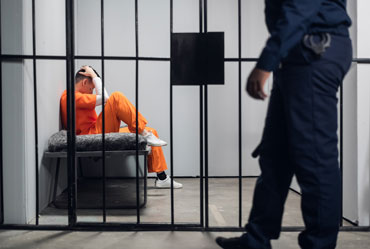Search

A felony charge creates serious legal complications that prompt most defendants to wonder about their potential imprisonment duration. Long-term prison time combined with heavy financial penalties along with lasting social effects constitute the major consequences that you will experience after a felony conviction. This guide explains felony jail term possibilities as well as felony classification procedures and details sentencing influence factors.
The most dangerous criminal offenses belong to the felony category which leads to imprisonment exceeding twelve months. All felony crimes exist above the criminal ranks of misdemeanor offenses and infractions which receive lesser punishments or demand no punishment at all. The list of felony offenses consists of: Homicide Rape or sexual assault Armed robbery Drug trafficking Burglary Arson Kidnapping Fraud or embezzlement (in large amounts) The evaluation of felonies varies among states as well as the federal system although most systems use a structured system of felony layers.
Thousands of jurisdictions across America use this framework to distribute felony class sentences and their corresponding prison sentences throughout numerous states: Felony Class Typical Jail Term Class A / Class 1 Life imprisonment or death penalty Class B / Class 2 25 years to life Class C / Class 3 10 to 25 years Class D / Class 4 5 to 10 years Class E / Class 5 1 to 5 years The sentencing rules of unclassified felonies exist within specific statutes having different specifications across jurisdictions. Different jurisdictions follow their own sentencing guidelines and state laws even as some use varied penalties and classifications.
The U.S. Sentencing Commission establishes federal felony sentencing through base offense levels together with criminal history categories.
Every state controls felons through their specific criminal laws. New York divides felonies into A-I levels and California ranks them from Class 1 to Class 6. The justice system assigns felony punishments to state or federal prison facilities instead of local detention centers.
Multiple elements determine how long a convicted felon must wait behind bars:
A felony record affects your opportunities to carry out these tasks. Vote (in some states) Own a firearm. Some job types and professional permits require you to have clean records. Travel internationally States allow people who finished their punishment to have their records reduced or removed under distinct rules.
People who commit felonies will survive a significant period behind bars. The amount of prison time someone gets for a felony offense depends mainly on how serious it is plus local laws and unique facts of their criminal case. A felony charge demands professional legal representation to guide you on what to do and how to negotiate for a beneficial result in court.